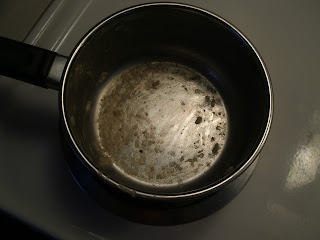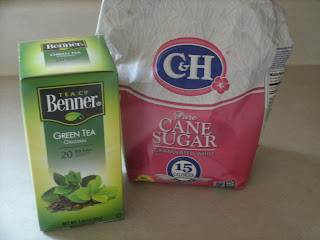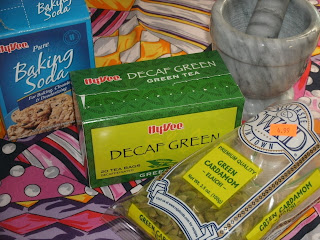Madagascar
Madagascar
What do I know about Madagascar? It's a large island off of the east coast of the African continent. When my sister was a kid, she had a teacher who had some hissing cockroaches from Madagascar, and she used them as a visual aid for a report she did on Madagascar. As part of her report, she had to make a food from her chosen country, so she made some sort of fried bread. I really don't remember it all that well (hey it wasn't my project). I do remember that there was some kid who said that she was serving up fried cockroaches (gotta love kids, and the things they say). Just in case you are wondering, no cockroaches were involved in the making of this tea (or my sister's project years ago).
Here is some more information about Madagascar. It's the 4th largest island in the world. While it is in close proximity to the African continent, the people are more closely related to those in Indonesia. French colonial rule actually brought them closer to the people in Africa because of a shared language with the countries in West Africa.
Finding information about tea served in Madagascar was more challenging. Searching for Madagascar on YouTube brought up innumerable clips from the Dream Works movie, "Madagascar". Not what I wanted. I found a reference to burnt rice tea in a blog about food around the world, but the method to make it didn't make sense to me. She took cooked rice, then seared it in a hot pan. I couldn't figure out why they would take perfectly good cooked rice and then burn it. I know there is a long history of using rice as a substitute for tea when it was unavailable, or too expensive to buy. In those instances, raw rice is toasted and then brewed, not cooked first. Then I came across a show called, "Bizarre Foods with Andrew Zimmern". He had a show about Madagascar, so I decided to watch and see if there was any mention of tea. After all, I wasn't having any luck elsewhere. Toward the end of the show, I got my answer.
The host was following a family who sold food at kind of a pop up roadside hoteli (hoteli is the same name used for restaurant type establishments in Kenya). Rice tea was served at the end of the meal. The method shown in that show made sense. They had a big pot of rice that they were serving out of for an hour or two. Since they wanted to serve hot food, they kept the rice over a low flame, and the stuff in the bottom of the pan got really brown and crispy. When the pot was empty, and all the rice had been served, they added water and boiled it to loosen the brown bits. Not only does it help with cleaning the pan later, it also gives you tea to sell.
Now I had to figure out how to make this myself. I normally make rice in my pressure cooker, and I really didn't want to leave it on heat for a couple of hours to crisp up some rice, so I improvised.
Yes, this is cold, cooked rice in a pan. While white rice is much more popular around the world, I had brown rice made up. so that is what I'm using today. I added a little water and stirred it up. Then I added a little more water, and a little more, and a little more. Okay, you get the point. I added enough water to make it really moist, slapped a lid on it, then turned on the heat to boil. After it started to boil, I turned down the heat and let it steam to warm. I stirred it occasionally as the water seemed to rise to the top, and the rice stuck to the bottom. Then I took the rice out of the pan (can you say breakfast?).
That left me with a mostly empty pan sitting over low heat. Medium heat. It takes this stuff a long time to get brown. It also smells really good in the process. There were also little popping sounds every so often. While I know this is traditionally made over hours on low heat with a full (moving toward empty) pan, I didn't have that kind of patience.
So I finally reached a moment where I decided it was brown enough. It could have gone much longer and gotten darker, but I do still have to wash this pan at the end. I added my water and brought it to a boil. I used a heat resistant spatula to scrape up all the browned bits on the bottom of the pan (although I'm sure a spoon would work too).
There was no indication as to whether the rice bits were strained out, so I went with the theory that they weren't. My tea is a little light. This also tastes better than I expected. It has a toasted, nutty flavor. It retains some rice flavor, but it is much richer from the browning. You could make a case for straining this tea if the rice bits in the bottom of the cup bother you, but since my tea was rather weak, I think it helped bolster the flavor (and color for sure). The example I saw on "Bizarre foods" was much darker (and made from white rice). It's a good example of how to use food to its fullest. I never thought of making tea (or broth for a soup if you would prefer it that way) from the stuff left over in the bottom of a rice pan.







That's kind of neat! More my style than actual tea....
ReplyDeleteAs for the bread I made, I don't remember anything about it other than it called for rosewater, and there was no way to get rosewater in our small town. I think maybe I added orange extract instead? I remember the book suggested using some other flavoring that was also popular in the country if rosewater was unavailable, and orange seems like it might have been the one.
I don't know how well it would work with minute rice, but I did think of you when I was making it.
DeleteToo bad you don't have the bread recipe any more, I have a bottle of rose water in the fridge. Sometimes I add it to rice when I cook it to give it a light, floral flavor (one recipe said to add rose water and saffron, but I decided I prefer to use saffron alone as the rose water was stronger than the saffron). I bet rosewater rice would make a nice burnt rice tea, too.